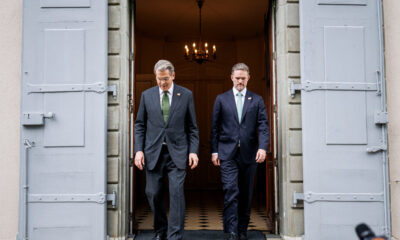The recent development: After more than three years of intense negotiations involving over 190 countries, the World Health Organization (WHO) has finalized a historic pandemic accord aimed at preventing and responding to future global health crises. The agreement was reached during a marathon session at the WHO headquarters in Geneva and concluded in the early hours of April 16, 2025.
Why was it necessary?
Tedros Adhanom Ghebreyesus, WHO director-general, called it “a significant milestone in our shared journey towards a safer world,” emphasizing the importance of global solidarity in facing health emergencies. The agreement comes five years after the outbreak of COVID-19, a pandemic that exposed the vulnerabilities of international health systems. With the increasing threat of infectious diseases such as H5N1 bird flu, mpox, measles, and Ebola, negotiators felt a sense of urgency.
The main component of the newly adopted agreement is the proposed Pathogen Access and Benefit-Sharing System (PABS), which aims to facilitate the rapid sharing of pathogen data among nations and with pharmaceutical companies. This data-sharing mechanism is expected to play a crucial role in expediting the development of vaccines, diagnostics, and treatments during future pandemics. The agreement outlines a system where cooperation is not just ideal but operationally necessary, enabling scientific collaboration at an unprecedented pace. It also includes provisions to ensure fair and equitable access to pandemic-related health products, especially for low- and middle-income countries that were disadvantaged during the COVID-19 response.
The COVID crisis saw wealthier nations securing large supplies of vaccines, testing kits, and protective equipment, while many poorer countries faced shortages and delays. The new deal directly addresses these disparities by introducing guidelines to prevent such inequities from happening again.
Technology transfer was a contentious issue during the negotiations. Developing countries advocated for language mandating the sharing of critical health technologies during pandemics. However, countries with powerful pharmaceutical industries resisted mandatory provisions, citing concerns about intellectual property rights and innovation incentives. A compromise was eventually reached, with the final text stating that any technology transfer must be “mutually agreed upon,” a clause designed to balance global equity needs with pharmaceutical innovation business realities. The 32-page document was unanimously agreed upon by all participating countries, marked entirely in green.
What shortcomings did the pandemic reveal?
The COVID-19 pandemic exposed significant gaps in the world’s ability to mount a coordinated response to global health emergencies. These gaps included fragmented and delayed data sharing, unequal access to vaccines and other medical tools, lack of standardized protocols, and limited international accountability. Many nations acted independently, often hoarding resources or closing borders in panic, hindering collective efforts and prolonging the pandemic’s impact. Although initiatives like COVAX aimed to create more equitable vaccine access, they faced challenges such as underfunding, supply chain issues, and a lack of global cooperation.
Public health experts have long warned that without a globally accepted and legally grounded framework, the world risks repeating the same mistakes in the face of future outbreaks. In a world where viruses can cross borders within hours, pandemics are no longer just national crises — they are shared threats.
What were the main hurdles?
Negotiations were intricate and often stalled due to diverging national interests. Article 11 of the agreement, which addresses the transfer of pandemic-related technologies, became a major point of contention. Low- and middle-income countries argued that equitable access to life-saving innovations like vaccines, antivirals, and diagnostics could not be guaranteed without a mechanism for sharing intellectual property and manufacturing expertise. On the other hand, nations with substantial pharmaceutical industries, particularly in Europe, opposed any language that would make such transfers obligatory. They argued that mandatory provisions could undermine the financial incentives required for rapid pharmaceutical innovation and could conflict with existing international trade laws. The compromise to allow “mutually agreed” transfers represents a diplomatic middle ground, although some critics argue it lacks enforceability and may not adequately protect vulnerable populations.
Will it influence global cooperation?
One of the key aspects of the agreement is its strong emphasis on equity. The WHO director highlighted that the text demonstrates a broader commitment to fairness in access, particularly for countries that often bear the brunt of health crises without adequate resources to respond. The agreement recognizes that pandemic preparedness is not just about stockpiling vaccines or hospital beds; it is about establishing a framework for transparency, trust, and timely action. For lower-income countries, the agreement offers capacity building and international support to enhance health infrastructure and logistics. While equity is central to the agreement’s language, its realization will depend significantly on political will and practical implementation.
Helen Clark, former Prime Minister of New Zealand and co-chair of the Independent Panel for Pandemic Preparedness and Response, observed that this accord demonstrates that global multilateralism is still achievable — even in a fragmented geopolitical landscape.
David Reddy, director-general of the International Federation of Pharmaceutical Manufacturers and Associations (IFPMA), noted that while the agreement is a positive starting point, certain conditions must be met to maintain industry involvement in pandemic preparedness. He stressed the need for legal clarity and protection of intellectual property if companies are to continue investing in high-risk, high-cost medical solutions. The industry is concerned that poorly designed policy measures could hinder innovation or delay critical products.
What comes next?
With the agreement finalized, member states are expected to incorporate its principles into national legislation, establish funding mechanisms, and create monitoring systems to ensure adherence. The agreement will be put forward for formal adoption at the WHO’s annual assembly.
Published – April 27, 2025 03:53 am IST







































